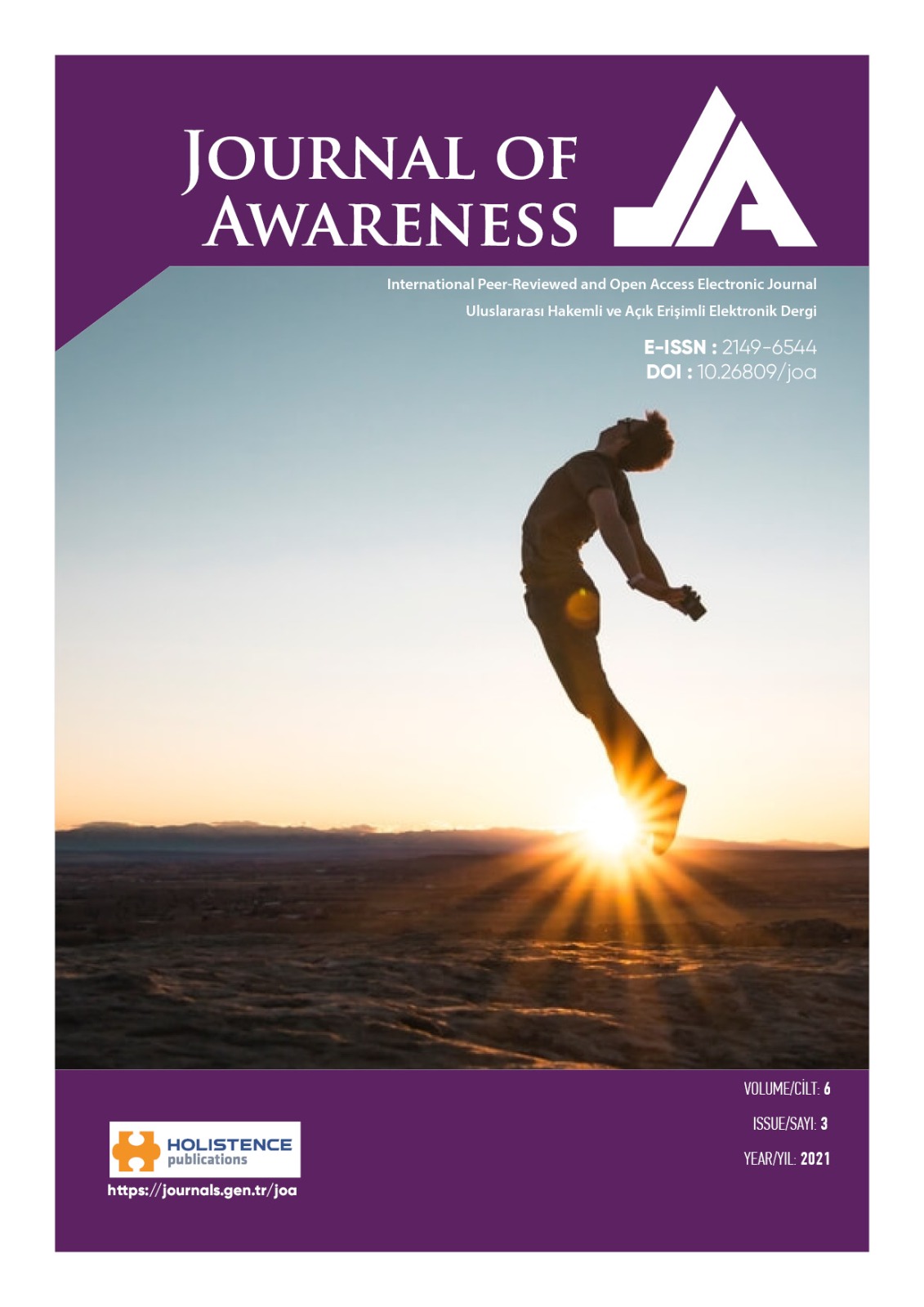Government houses as presentation of power and ideology in the Ottoman State: The case of Safranbolu Government House
DOI:
https://doi.org/10.26809/joa.6.3.05Keywords:
Ideology, power, architecture, government houses, Safranbolu Government HouseAbstract
Architecture, which is associated with the practice of producing space, has always rendered the powers and ideologies visible. This study investigates the government houses in the 19th century Ottoman State with regard to the notions of power and ideology and focuses on the Government House of Safranbolu. It is known that, in the specified period, government houses were important ideological interventions to urban space. This study aims to address the ideological context of the Safranbolu Government House, which is positioned with the ideal of the state. Based on this, first, the urban history of Safranbolu was examined. The importance of Safranbolu Government House in the history of the city, its relationship with the city, its ideological message to the city-dwellers and its architectural style were analyzed through a method based on archival research. All government houses of the period are the artifacts of urban-spatial structures
and their architectural style as well as a shared ideology. Safranbolu Government House, which is one of the structures symbolizing the Ottoman State, was also built with a similar ideological consideration. Thus, the readability of the dominant ideology through the production style of Safranbolu Government House, one of the final period architectural artifacts of the Ottoman State, was verified.
Downloads
References
ACUN, H. (2011). Osmanlı İmparatorluğu Saat Kuleleri. Atatürk Kültür Merkezi Yayını, İstanbul.
AKYÜREK, G. (2008). Bilgiyi Yeniden Inşa Etmek: Tanzimat Dönemi Osmanlı Mimarlığı, Doktora Tezi, Yıldız Teknik Üniversitesi Fen Bilimleri Enstitüsü, İstanbul.
AKTÜRE, S. (1985). Osmanlı Devleti’nde Taşra Kentlerindeki Değişimler. Tanzimat’tan Cumhuriyet’e Türkiye Ansiklopedisi- Cilt 4, İletişim Yayınları, İstanbul.
AKTÜRE, S., & ŞENYAPILI, T. (1976). Safranbolu'da Mekânsal Yapının Gösterdiği Nitelikler ve Koruma Önerilerinin Düşündürdükleri. O.D.T.Ü. Mimarlık Fakültesi Dergisi, 2(1), 61-96.
ALTHUSSER, L. (2015). İdeoloji ve Devletin İdeolojik Aygıtları (Çev. Alp Tümertekin). İthaki Yay. İstanbul.
AVCI, Y. (2017). Osmanlı Hükûmet Konakları: Tanzimat Döneminde Kent Mekânında Devletin Erki ve Temsili.Tarih Vakfı Yurt Yayınları.
CANBULAT, İ. (2020). Seyahatname ve Yazılı Kaynaklarda Safranbolu. Safranbolu Çarşı’sı, 98-121.
DERİNGİL, S. (2014). İktidarın Sembolleri ve İdeoloji II. Abdülhamid Dönemi (1876-1909) (Çev: Gül Çağalı Güven), Doğan Kitap, İstanbul.
DÜZENLİ, H. İ. (2012). Mardin’de Tarih, Bina ve Mimarlık Katmanları: 19. yy. Hükümet Konağından 21. yy. Mimarlık Fakültesine Dönüşümün Hikâyesi. Arredamento Mimarlık, 254, 64-78.
EAGLETON, T. (1996). İdeoloji (Çev. Muttalip Özcan), Ayrıntı Yayınları, İstanbul.
FINDLEY, C. V. (2011). Tanzimat, Türkiye Tarihi Cilt IV- Modem Dünyada Türkiye 1839-2010. Kitap Yayınevi, İstanbul.
GÖL, B. (2009). Fiziksel Çevrede Egemen Ideoloji ve Direnç, Yüksek Lisans Tezi, İstanbul Teknik Üniversitesi Fen Bilimleri Enstitüsü, İstanbul.
GURALLAR YEŞİLKAYA, N. (2003). Halkevleri: İdeoloji ve Mimarlık. 2. Baskı, İletişim Yayınları, İstanbul.
HACISALiHOĞLU, İ. Y. (1995). Şehir Coğrafyası Açısından Safranbolu- Karabük İkilemi, Doktora Tezi, İstanbul Üniversitesi Sosyal Bilimler Enstitüsü.
HALAÇ, H. H., & ÖZDEMIR İLHAN, S. (2014). Kentsel Imge Olarak Saat Kuleleri; II. Abdülhamit Han Dönemi Saat Kulelerinin İstanbul Dışı Türkiye Coğrafyasında Dağılımları ve Bir Tipoloji Denemesi, Humanities Sciences, 9(4), 190- 200.
KONUK HALAÇOĞLU, N. (2018). Tanzimat Sonrası, Osmanlı Rumeli Vilâyetleri Hükûmet Konaklarında Ideoloji ve Erk’in Mimari Temsili (1839-1922), Doktora Tezi, Atılım Üniversitesi Fen Bilimleri Enstitüsü, Ankara.
MARDİN, Ş. (2018). İdeoloji. İletişim Yayınları, İstanbul.
MCLELLAN, D. (2005). İdeoloji (Çev. Barış Yıldırım), İstanbul Bilgi Üniversitesi Yayınları, İstanbul.
ORTAYLI, İ. (1984). Söyleşi: Osmanlı’dan bugüne hükûmet konakları, Mimarlık, 22(5), 3-15.
ORTAYLI, İ. (1985). Batılılaşma Sorunu. Tanzimat’tan Cumhuriyet’e Türkiye Ansiklopedisi-Cilt 1, İletişim Yayınları, İstanbul.
TANÖR, B. (1985). Anayasal Gelişmelere Toplu Bir Bakış, Tanzimat’tan Cumhuriyet’e Türkiye Ansiklopedisi- Cilt 1, İletişim Yayınları, İstanbul.
TANYELİ, U. (1989). Mimarlıkta Ideolojik Amentü. Mimarlık, 27(4), 78- 81.
TEKELİ, İ. (1985). Tanzimat’tan Cumhuriyet’e Kentsel Dönüşüm. Tanzimat’tan Cumhuriyet’e Türkiye Ansiklopedisi- Cilt 4, İletişim Yayınları, İstanbul.
ULUKAVAK, K. (2017). Bir Safranbolulunun Penceresinden Safranbolu (Gözlemler-Derlemeler-Denemeler). Karabük Üniversitesi Yayınları, Karabük.
ULUKAVAK, K. (2020). Safranbolu- Korumada Tarihsel Süreç, Safranbolu Araştırmaları Merkezi Yayınları, İstanbul.
URL1. Tdv İslâm Ansiklopedisi (islamansiklopedisi.org.tr), Date of access: June, 2020.
URL2. Salt Araştırma: Giresun Hükümet Konağı- Giresun City Hall (saltresearch.org), Date of access: November, 2020.
URL3. Amasya | Eski Türkiye Fotoğrafları Arşivi (eskiturkiye.net), [Date of access: November 2020].
URL4. Edirne, 1878 | Eski Türkiye Fotoğrafları Arşivi (eskiturkiye.net), [Date of access: November, 2020].
URL5. Edirne Paşakapısı / 1900′ler | Eski Türkiye Fotoğrafları Arşivi (eskiturkiye.net), [Date of access: November, 2020].
URL6. http://karabuk.gov.tr/safranbolu-ilcesi, [Date of access: November, 2020].
URL7. Kent Tarihi Müzesi (ktb.gov.tr), [Date of access: November, 2020].
URL8. Kent Tarihi Müzesi Ve Tarihi Saat Kulesi (ktb.gov.tr), [Date of access: November, 2020].
YAZICI METİN, N., 2019, Tanzimat’tan Cumhuriyet’e Hükûmet Konaklarının İnşa Süreci ve Mimarisi Devlet Kapısı, Kitabevi, İstanbul.
Downloads
Published
How to Cite
Issue
Section
License
Copyright (c) 2021 Holistence Publications

This work is licensed under a Creative Commons Attribution 4.0 International License.
When the article is accepted for publication in the Journal of Awareness, authors transfer all copyright in the article to the Rating Academy Ar-Ge Yazılım Yayıncılık Eğitim Danışmanlık ve Organizasyon Ticaret Ltd. Şti.The authors reserve all proprietary right other than copyright, such as patent rights.
Everyone who is listed as an author in this article should have made a substantial, direct, intellectual contribution to the work and should take public responsibility for it.
This paper contains works that have not previously published or not under consideration for publication in other journals.










